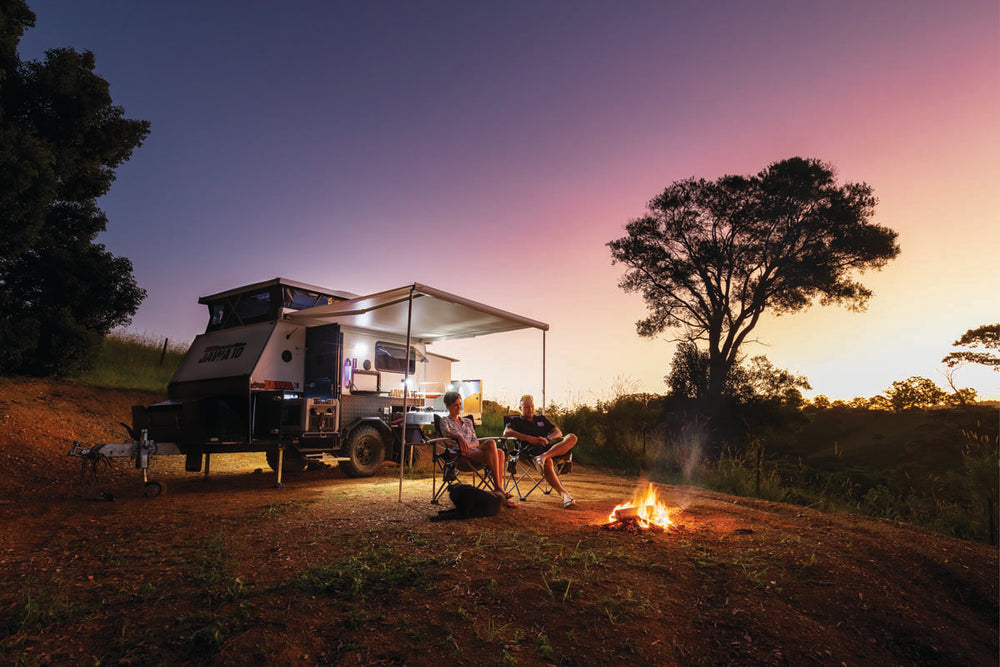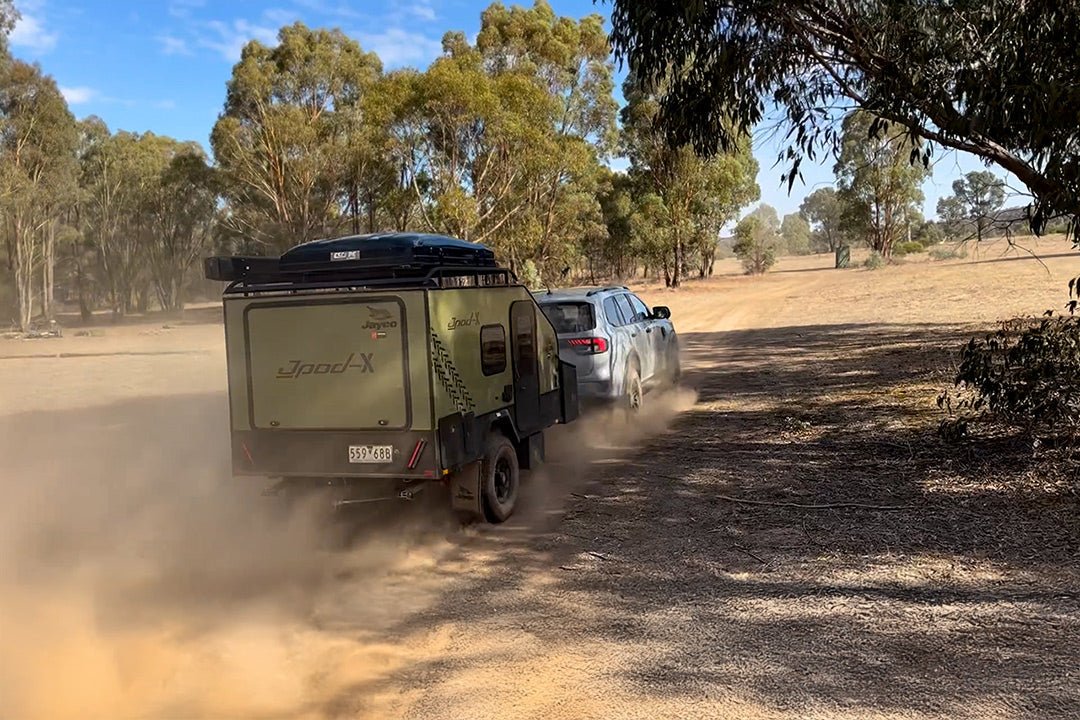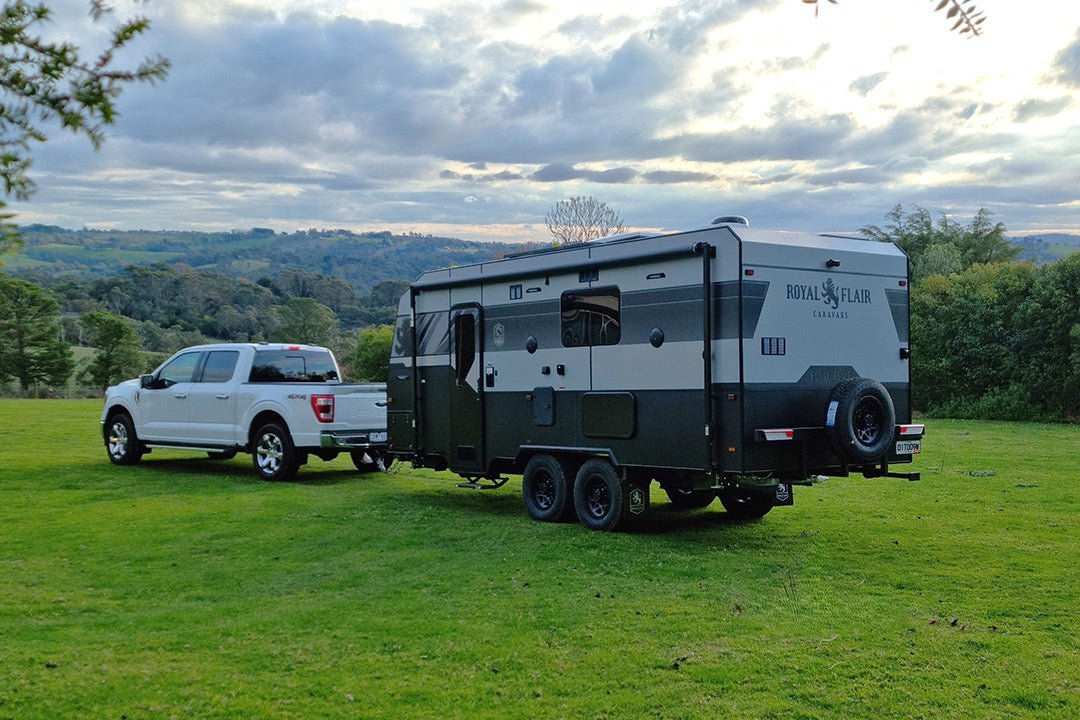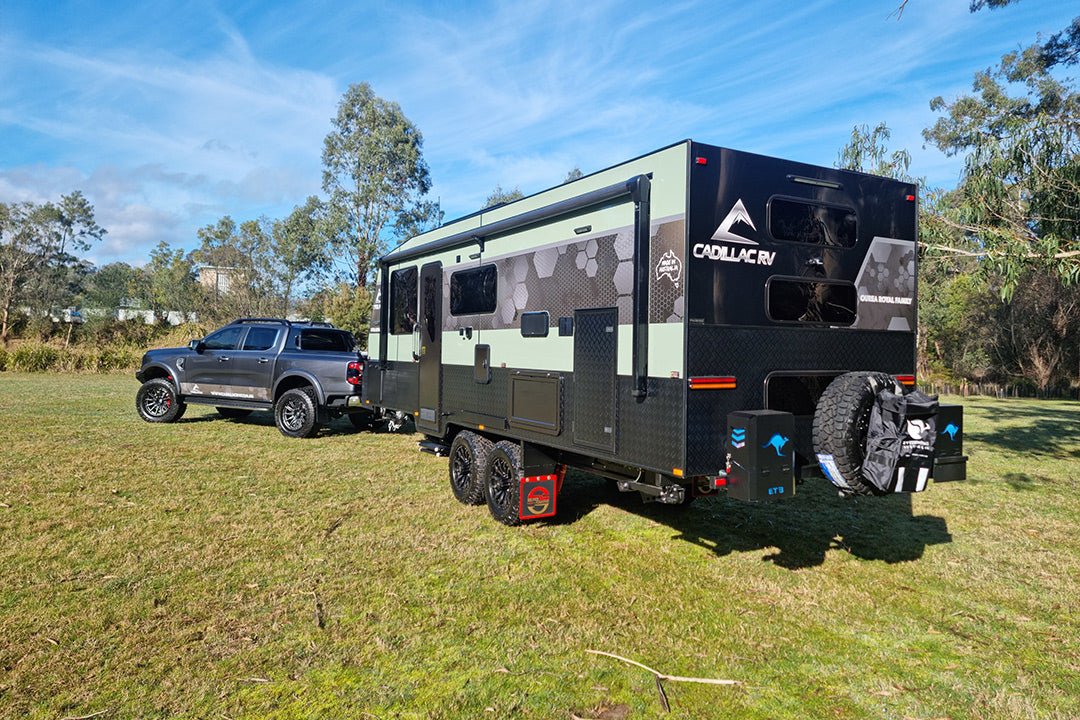See Something Shiny

I’m sitting in the middle of a dusty creek bed at noon, digging and sifting, weary and waiting to slam my pick into something big and crystalline.
With a reputation as one of the best places in the country to unearth gem-quality topaz (and aquamarine, citrine and smoky quartz too), O’Brien’s Creek, a few hundred kilometres inland from Cairns in Queensland, is a popular spot with a well-fossicked past. Campground manager Simon Harrison jokes that he used to have to hide behind a tree to stop the topaz from jumping out at him, but after hours spent scratching around in the sand with no results, it’s obvious that I’ve got a lot to learn.
Finally, beginner’s luck strikes and there’s something shiny sitting in my pan with that telltale crystal shape. I hold it up to the sunlight and decide it must be topaz — not enough to retire on — but a thrilling discovery nonetheless that’s just enough to keep our little band of fossickers keen.
We put in a few more hours of hard labour, unearthing tiny topaz chunks until by day’s end, they fill our daughter’s palm and we can hold our own amongst the real gem hunters gathered around the fire at nearby O’Brien’s Creek Campground.
Creekside camping
Located on the edge of the public fossicking reserve, this ultra-friendly camp is the kind of place I’d veer off the beaten track to find. There’s 25 acres of free-range shady camping, strung out along the edge of Elizabeth Creek where sandy pools lure waterbirds late into the dry season. These are deep enough for a dip after a hot day’s digging but few fossickers make it back before the sun dips low.
We return just in time to stoke our campfire and wash off the dust with much needed good, hot showers. We watch the mesmerising birdlife that gathers riverside and talk topaz long after dark. Our camp is roomy and there’s plenty of space between neighbours, which is exactly want you want when you’ve ventured this far inland.
It’s clean, affordable and dog-friendly, and manager Simon Harrison has plenty of patience for our band of beginners who arrive with starry eyes and lots of questions.
Harrison arranges Queensland fossicking permits on site (a top deal at $12.20 per family, per month) and happily hands out picks, sieves and shovels for free so there’s no need to hire gear in Mount Surprise on your way in.
The vibe in camp is very relaxed and, although the real gem hunters who settle in for the cool winter season won’t give up any secrets, Simon is happy to hand out maps and suggest spots where beginners might get lucky.
Digging for topaz
We start our gem hunt on the reserve’s namesake creek, digging and sifting through 2m of alluvial wash in search of the topaz and aquamarine that gets washed downstream with every wet season flood.
According to Simon Harrison, the stones often get trapped behind big granite boulders and the stoic tree trunks that eddy and still the water and stop the precious stones getting washed away.
We park our car and wander down the creek’s cycad-lined banks to find that we are clearly in a place where others have been before. There are holes dug everywhere we look and I can’t quite decide whether to find my own fresh patch or to take over someone else’s hole, just in case they gave up too soon and I find my fortune just a little deeper down.
We test out both theories and later decide that, given our extremely limited experience, finding our own crystals is probably going to come down to dumb luck. After a few hours of toil we move up the hillside towards the auspiciously named Tourmaline Gully, but make our best discoveries downstream closer to Elizabeth Creek.
The seven-year-old in our midst is the first to strike it rich, scoring a little topaz crystal that’s as beautiful as anything she’s seen in a jewellery shop. Unearthing it by herself means she’s entirely besotted and, in truth, it’s quite a marvelous feeling to find something precious that you’d normally pay for.
Later when I scan through topaz discoveries on Facebook, I see that we have been easily outdone by far luckier fossickers in our midst. Still, our little tin of gems is rattled happily away in the backseat as our hunt continues south, taking us off-road from Forsyth to Agate Creek.
Thunder egg surprises
As a child I remember picking up thunder eggs in the hundreds on a cattle station in the NT that rock hounds had yet to discover. We cracked them against each other to reveal spectacular crystalline centres, and carried the best back to Brisbane in the boot of my parent’s Kingswood station wagon.
Nestled in my parent’s back garden for decades, those thunder eggs belong to my daughter now, whose dream of unearthing her own agates sends us rumbling 70km off the bitumen to faraway Agate Creek.
Like O’Brien’s Creek, this government-sanctioned fossicking site known as Agate Pocket is no secret spot, and the thunder eggs found along its north-eastern rim are no longer easy pickings.
But it’s a big destination and there are plenty of places to try your luck: Blue Hill (for its blue agates with bright pink centres), Spring Creek (for thunder eggs) and Flanagans (the site of one of the first commercial mines in the area) are just the start.
We climb the slopes along the reserve’s north-eastern fringe and dig away, seeking out spots that are trickier to reach and filling deep pockets with palm-sized geodes, some of which sparkle and dazzle inside.
We dig with our hands and shovels easily enough, and when we can carry no more, head back down the slopes to emu-walk upstream along Agate Creek, bobbing and strolling to select the best of thousands of agate fragments sent tumbling from the upper reaches of the region’s most gem-rich waterway.
Our daughter fills a huge tin with colourful shards and golf ball-sized geodes, and spends the next week tapping away at her finds. Not every egg has flair but some do and it’s enough to fuel her infatuation with fossicking.
There’s a bush campground beside the Agate Creek fossicking area that provides hot showers (via donkey), drinking water, toilets and fireplaces, and an honesty box for camp fees. A stay here will cost you just $7.50 per person (free for kids), and the camp’s location puts you close to the fossicking action.
If you need power, you could spend a long day digging at Agate Creek and make a beeline for the excellent camps at Cobbold Gorge, a 45 minute-drive away. Here you can swim in the infinity pool for free and afterwards, stoke a campfire or head to the alfresco bar for something cold and bubbly.
All that glitters
If you love gemstones and all that glitters, don’t miss a stop at TerrEstrial back on the highway in Georgetown to marvel at the massive collection of gemstones on display which includes the 858g Providence Nugget. Georgetown’s history dates back to the 1870’s gold rush when prospectors flocked to the banks of the Etheridge River.
Today, Georgetown tempts travellers off the Gulf Developmental Road with a lovely, lush central park and free access to the town’s swimming pool. Georgetown provides access to some must-sees too: Cobbold Gorge, Copperfield Gorge, the Agate Creek gemfields and remote Rungulla National Park.
To free-camp close to Georgetown, head 20km west to join the travellers overnighting with the waterbirds around the dam at Cumberland Historic Mine Site. There are no facilities on offer so you’ll need to be self-sufficient and arrive early to grab some shade over the busy winter months.
There is a surprising amount to explore in this part of Savannah country, renowned for its gorges, gems and lava tubes. So while you may come to find your fortune, you could easily spend it several times over exploring Undara’s lava tubes and cruising through magnificent Cobbold Gorge.
If time is limited, for my money you really can’t beat the easy-to-access fossicking at O’Brien’s Creek for its gem-quality blue topaz, aquamarine, citrine and smoky quartz that’s all yours to unearth, and the shady waterfront camps and uber friendly vibe at O’Brien’s Creek Campground.
I had never really gotten into fossicking before this trip west of Cairns and now I finally understand the buzz. Finding gemstones is more than a little bit addictive, and as I write this yarn, I’ve got my copy of The Crystal Bible at hand and have more fossicking destinations on my radar.
5 Top fossicking tips
1. Time your trip west of Cairns for the cooler winter months from June to August.
2. Buy a fossicking licence online at qld.gov.au/recreation.
3. Arm yourself with picks, shovels and sieves, a sturdy bucket for your finds, a wide-brimmed hat, and plenty of water and sunscreen.
4. For topaz and aquamarine, head for the creek beds to dig behind tree trunks and boulders where gems often settle during annual wet season floods.
5. When hunting for agate thunder eggs, try searching down the slopes as heavy wet season downpours can wash geodes downhill.







